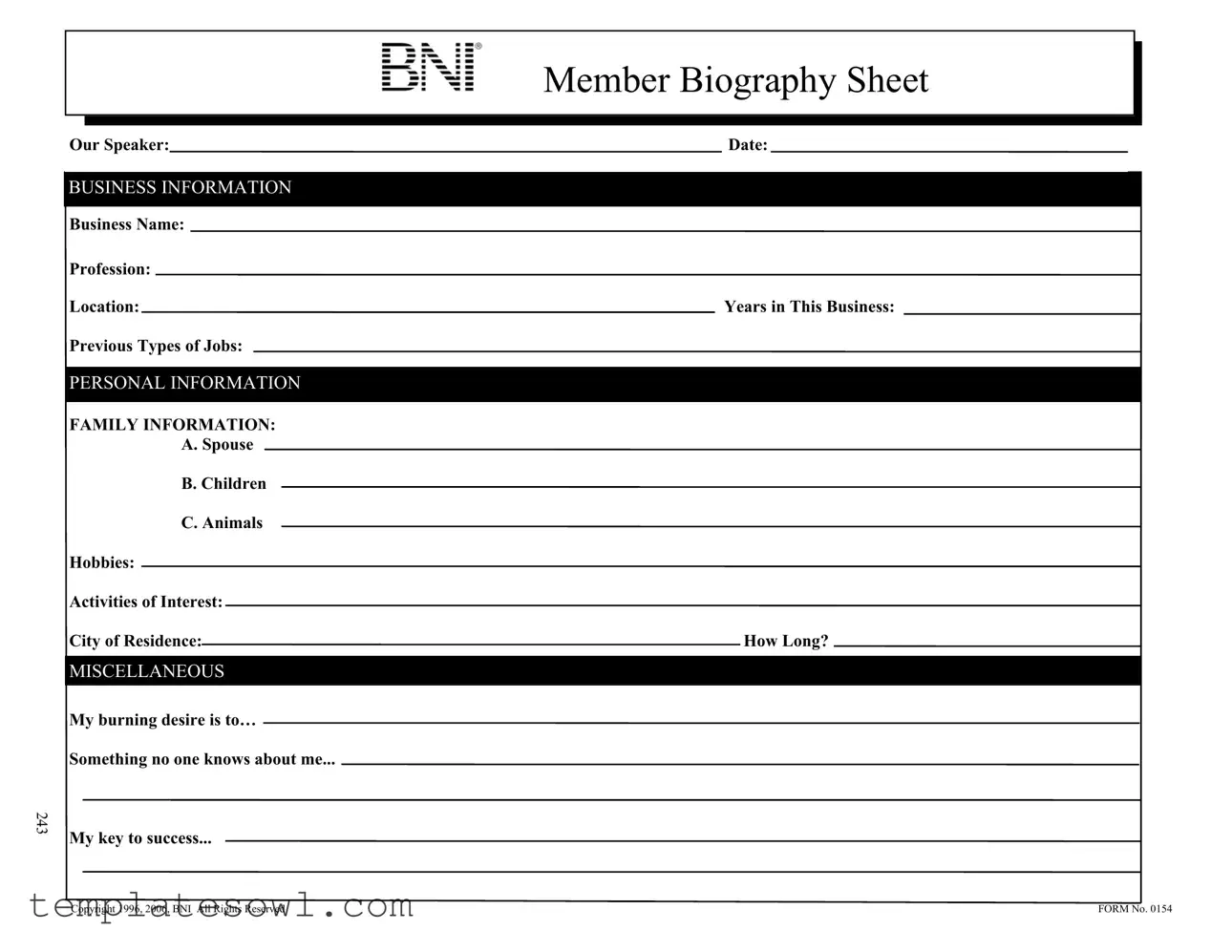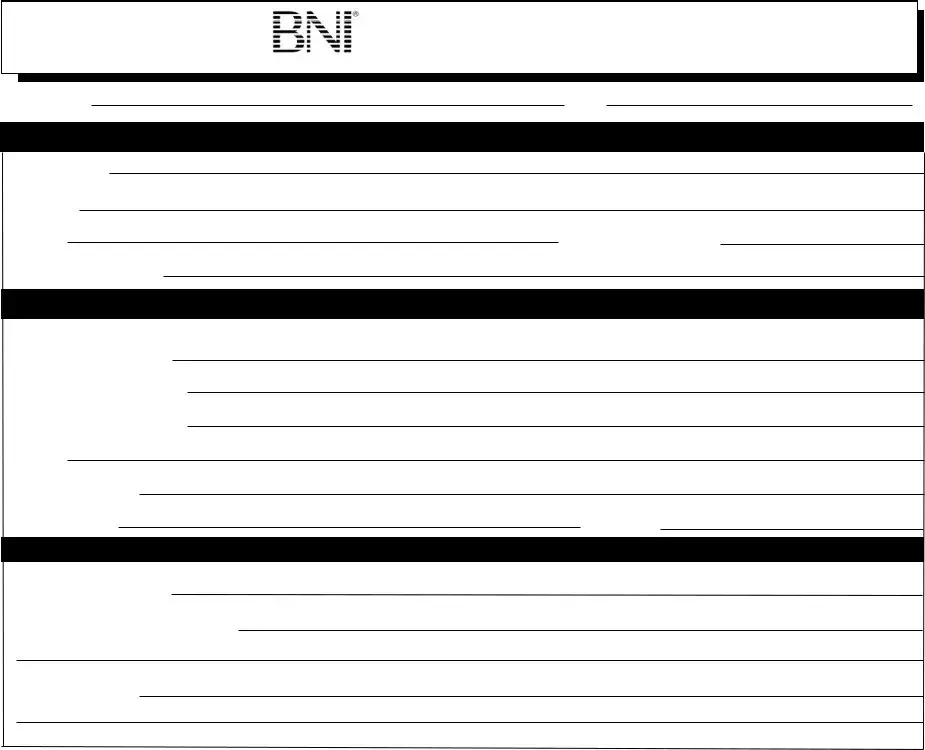What is the purpose of the Bio Sheet form?
The Bio Sheet form is designed to collect essential information about a member, including their business details and personal interests. This information can be used for introductions, networking opportunities, and promotional purposes within BNI.
What information is required in the Business Information section?
This section requires the member's business name, profession, location, years of experience in the business, and details regarding previous types of jobs. This information helps to provide context about the member's qualifications and expertise.
What personal information is included in the Bio Sheet?
Personal information includes family details such as the member's spouse, children, and pets. Additionally, hobbies and activities of interest are requested. This helps to showcase the member's personality and interests beyond their professional profile.
How should members fill out the Family Information section?
Members can provide details about their spouse, children, and any animals they may have. This section is optional, but sharing this information can foster personal connections within the group.
What are the miscellaneous sections of the form about?
The miscellaneous sections, including "My burning desire," "Something no one knows about me," and "My key to success," allow members to share unique personal insights. These prompts encourage deeper engagement and provide valuable conversation starters among members.
Are there specific guidelines for completing the Bio Sheet?
While there are no strict guidelines, members are encouraged to be honest and thoughtful in their responses. Providing detailed and complete information will benefit networking efforts and strengthen relationships within the group.
How is the information on the Bio Sheet used by the organization?
The information collected on the Bio Sheet is primarily used for introductions and profile building within BNI. It may also be included in member directories or shared during BNI meetings to facilitate networking.
Can members update their Bio Sheets after submission?
Yes, members can usually update their Bio Sheets as their circumstances change or as they wish to include new information. It is advisable to consult with BNI representatives on the process for submitting updates.

